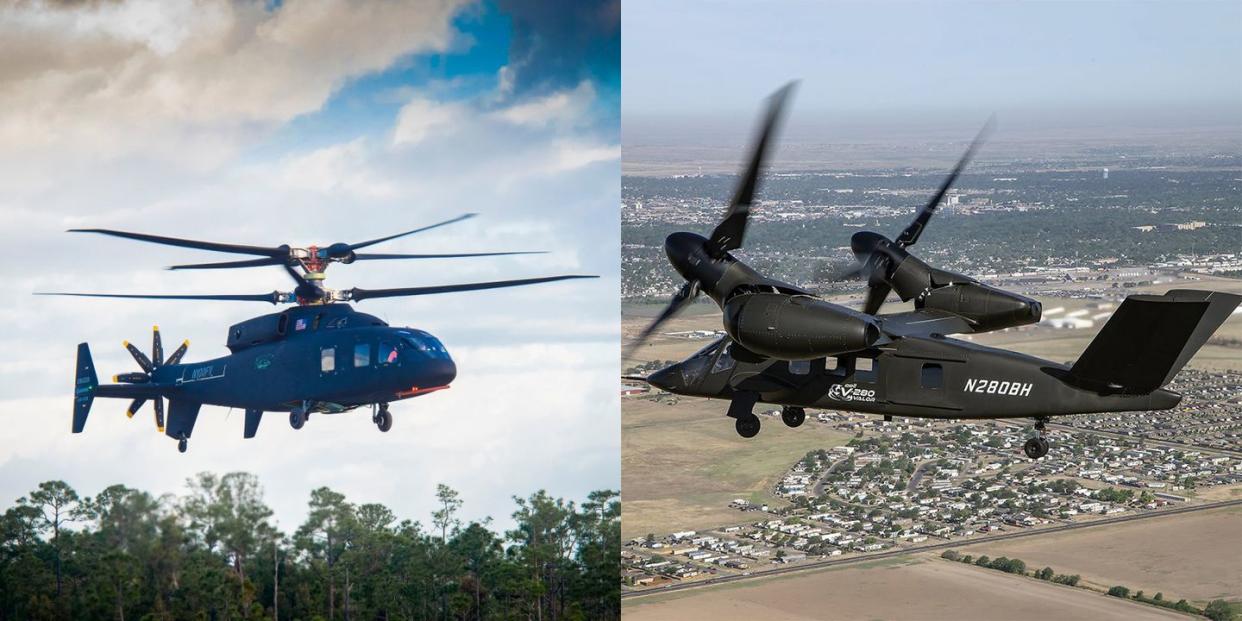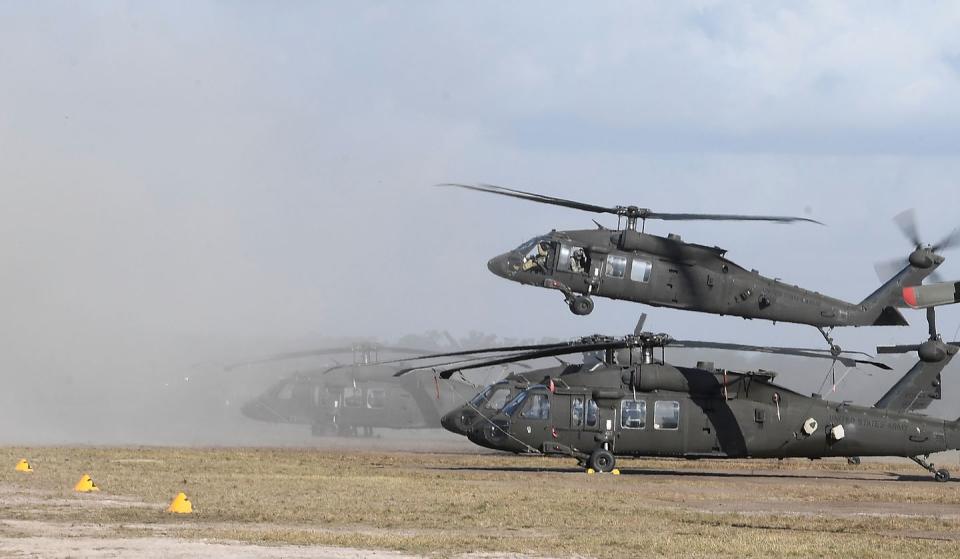And Then There Were Two: Which Helo Will Replace the Army's UH-60 Blackhawk

The Army has picked two companies to compete to replace the service’s UH-60 Blackhawk transport helicopter.
The two aircraft differ radically from conventional helicopter designs to offer greater speed.
The winner of the competition will enter service in 2030.
The U.S. Army has picked two winners, which will face off to replace the UH-60 Blackhawk medium transport helicopter. The Sikorsky-Boeing SB-1 Defiant (left) will square off against the Bell Textron V-280 Valor (right) in the Future Long Range Assault Aircraft program. The winner will enter U.S. Army service with the first units equipped with the aircraft in 2030.
The U.S. Army’s UH-60 Blackhawk helicopter first flew in 1974, entering service in 1981. Today’s UH-60M, the latest version, is powered by two General Electric T-700 GE-701D engines, allowing it to carry a crew of four and eleven fully equipped combat troops at a cruise speed of 151 knots (173 miles an hour). The UH-60M has a range of 317 miles.
The Blackhawk is a proven, reliable aircraft but after 40 years the design is maxed out. The Army wants a faster, longer range replacement, and the service made it clear to industry it wanted to achieve those objectives using new—even revolutionary—ideas in vertical lift.
The two competing aircraft reflect the Army’s desire for new tech. The Sikorsky-Boeing SB-1 Defiant looks like a helicopter but there are important differences. For example, instead of a single, five-bladed main rotor and tail rotor it uses two contra-rotating rotors and a rearward facing push rotor. A medium transport helicopter version of the Defiant would have a crew of four and carry 12 combat troops. It would reach speeds of up to 250 knots (287 miles an hour), more than 100 miles an hour faster than the Blackhawk.

The Bell Textron V-280 Valor, on the other hand, is a tiltrotor design much like the V-22 Osprey. The V-280 improves on the V-22 concept slightly—while the Osprey rotated its entire engine nacelle to switch between helicopter and fixed-wing aircraft flight modes, the V-280 merely rotates the forward third of the nacelle where the large, oversized rotors are located. The V-280’s top speed exceeds 300 knots (345 miles an hour), making it twice as fast as the UH-60M. Valor will have a combat range of 800 miles, which is more than double the Black Hawk’s range. Lastly, the V-280 will have a crew of 4 and can carry 14 passengers, three more than the Blackhawk.
All of this means there’s a 50/50 chance that the Army’s next assault helicopter won’t actually be a helicopter. The V-280 Valor is a tiltrotor and technically not a helicopter, which is why the service refers to the Blackhawk replacement as an “assault aircraft”.
The Army plans to choose one design in 2022, with the first assault helicopter units receiving the new aircraft by 2030.
Source: Military.com
You Might Also Like

